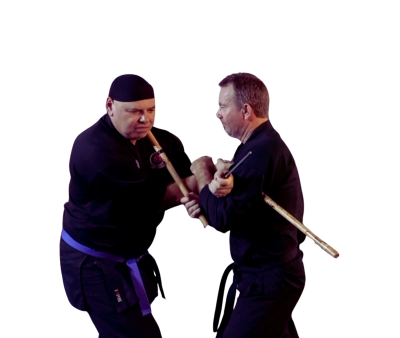We believe in training that is realistic and adaptable to our environment. Our system emphasizes the use of live, dynamic training to develop practical self-defense skills that work under pressure.

Solo Baston (Single Stick)
Single stick training preformed with a rattan stick aimed at familiarizing students with blade orientation and improvised weapons. Single stick styles taught are Largo Mano, Media Largo, Corto Kurbada, Corto Linear,
Sinawali and Redonda
These two types of double stick fighting are weaving motions made with two sticks to familiarize the students with the method of stick fighting, both with sticks and empty hands.
Espada Y Daga
Espada y daga which is also known as punta y daga or olisi y baraw, is the most complicated and difficult type of eskrima. The aim of this set is to fight efficiently at long, medium, and close ranges by trapping the enemy in techniques termed “total locking”.
Baraw (Knife)
Knife techniques has always been associated and deemed an integral part of the traditional Filipino Martial art. Known as baraway, or dungabay, knife techniques are normally taught at the more advanced stages of eskrima training. Filipino knife fighting techniques have influenced Police and Military Knife Defence strategies all over the world.
Kadena De Mano
It has been said that in the Filipino martial arts the weapon is only an extension of the hand. Hence, most techniques are basically the same whether they are executed with or without a stick. Kadena De Mano is unarmed combat implementing hands, elbows, head butts, knees, foot stomps, and foot sweeps.